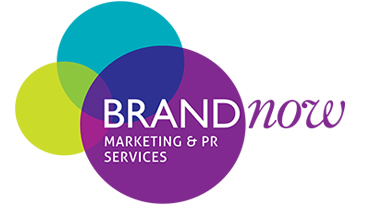
IN today's media savvy world, every
company wants to be featured in the
press to tell their story. However, when
they are faced with the media, they often
find that they are either misquoted or
that they were unable to deliver the message
they wanted the public to hear.
Remember that spoken words have
power. Whatever you say during an
interview will be used by several media
outlets (print, online and broadcast) and
bloggers. News travels quickly in this age
of digital media and there is no room for
making errors.
This is why it is imperative to
carefully choose words when speaking
with media to avoid any awkward
miscommunication. Make sure
your statements and responses
are well-crafted otherwise you
risk facing the consequences
and inadvertently damaging
the company's credibility
and reputation.
Many companies are
eager to get exposure in
the press but fail during
interviews as they do not
know what to say, and how and
when to say it.
This is where media training is
helpful to avoid this type of situation.
The key is to be prepared so that you
can effectively present your message to
the media to maximize this opportunity
for media exposure. Media interviews
go beyond just simply promoting your
products or services. They educate the
public about your background and your
inspiration for creating your product, and
also add credibility to your organization.
Media training is used to train a company's
spokesperson on how to interact
with the media to effectively communicate
a key message, thus gaining positive
coverage for the company.
Media training is not limited to just
large companies. It is also suited to small
business owners. Media training is a
great tool in helping you understand
what the media is looking for and how to
handle all types of media interviews.
During media training, a team of
specialized trainers with backgrounds in
media, PR and crisis management conduct
either a half or full-day interactive workshop.
It is usually provided to the senior
management of the company and the
spokesperson designated by the company.
The spokesperson of the company
must have a strong understanding of the
company's background,
be the best representative
of the ethos of the company, and be qualified
to comment. This spokesperson could
either be the company's CEO, senior executive
or a public relations director. It is
important that the spokesperson receives
media training to develop skills needed to
convey a consistent message. Additionally,
you want to make sure that the person
will be comfortable and articulate in front
of the media.
Media training covers a variety of
communication topics. It includes both
theory and hands-on practice of speaking
to the media. It involves videotaped, simulated
media interview sessions and role
playing. Participants are provided with
interview tips and strategies they can use
so that they can feel comfortable, confident
and in-control when speaking with
a reporter. A media trainer will provide
you insights into the media so that you
understand how media works.
Taking part in a media interview
doesn't have to be a stressful experience.
The key is in preparation. Be prepared
with facts and figures. Rehearse your
messages and answers so you avoid stumbling
when answering. Keep the interview
simple. Avoid using too much jargon or
industry-specific words or you will confuse
people and risk being misunderstood or
not understood at all.
Take the example
of the BP oil spill in 2010,
where a pipeline was ruptured
beneath the surface
of the Gulf of Mexico, making
it the largest oil spill in
US history.
Bad communication
coupled with a lack of transparency,
honesty, and insensitivity
to the victims drew
heavy criticism from the
media and general public.
CEO Tony Hayward clearly
did not handle the situation
well. He blamed the spill on the company
that operated the drilling and said it
wasn't BP's accident. He also misjudged
the size of the spill, saying: "I think the
environmental impact of this disaster is
likely to be very, very modest." During an
interview, he said he wanted his "life back"
and was photographed holidaying with his
son on a yacht amidst the crisis.
Needless to say, this portrayed
both the organization and the CEO in a
negative light. Media training would have
enabled Tony to handle even the most
challenging questions gracefully.
Kittima Sethi is a PR consultant at Brand
Now Co., Ltd. A former journalist, she
also conducts media training and may be
reached at kittima@brandnow.asia
|
















 | Newsletter | Brand Now Co., LTD. |Telephone: +662 662 5622 | © Copyright 2016
| Newsletter | Brand Now Co., LTD. |Telephone: +662 662 5622 | © Copyright 2016

